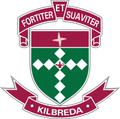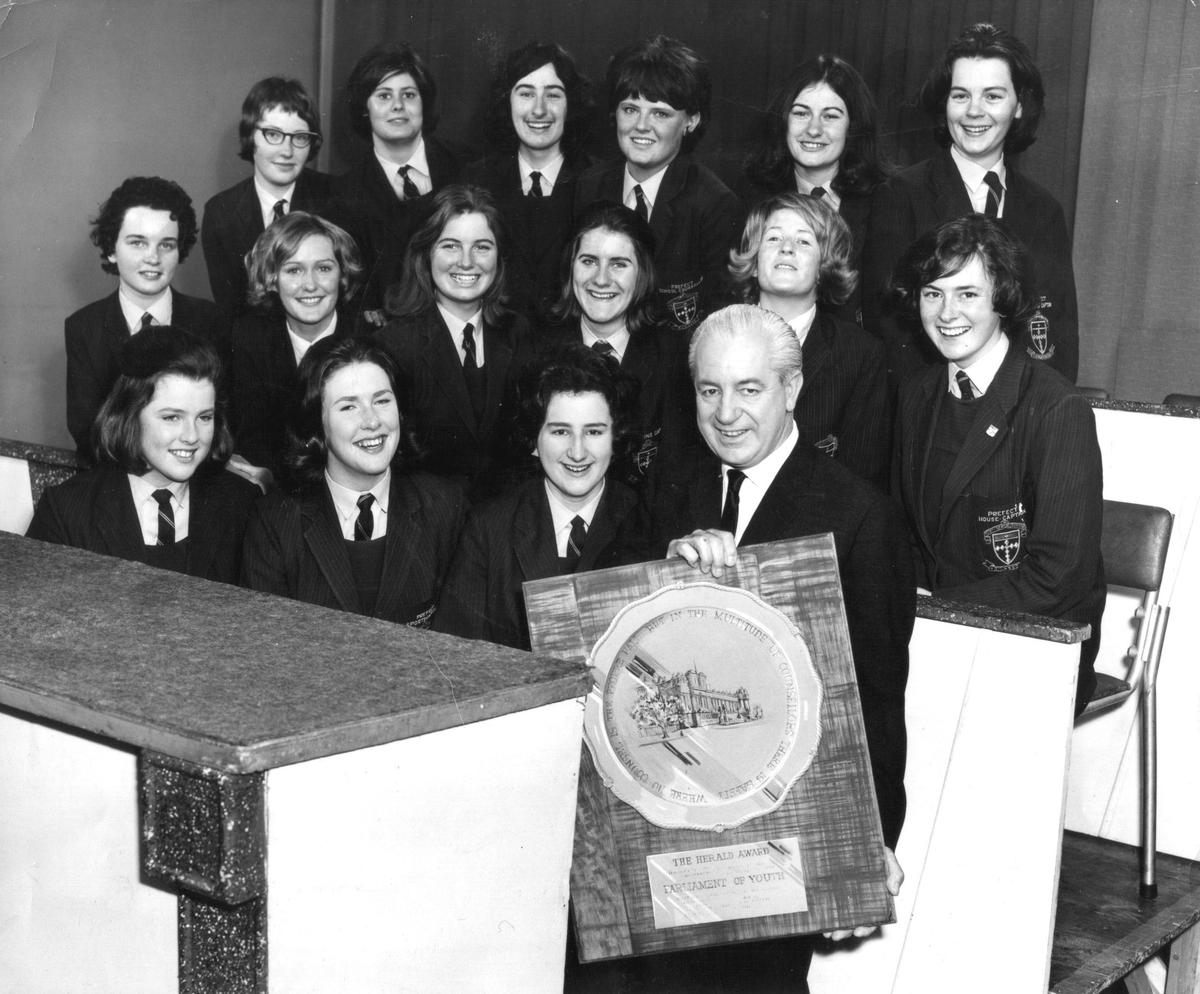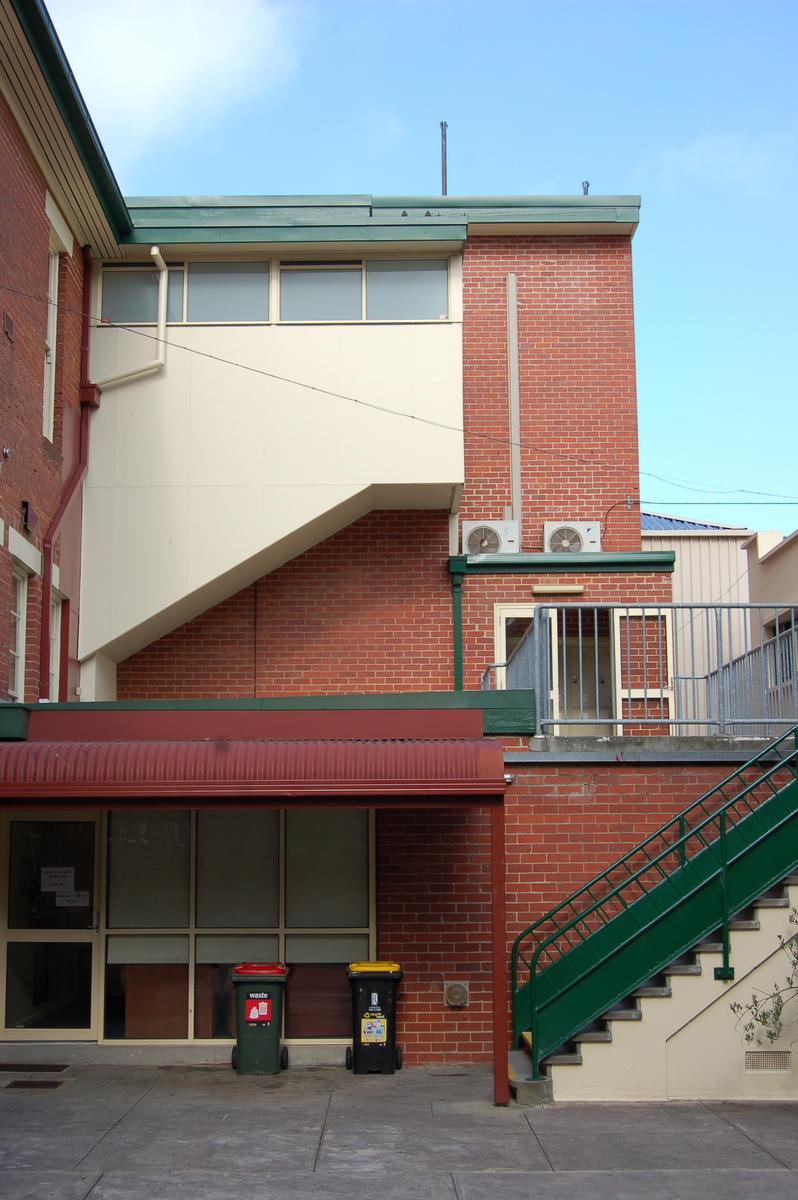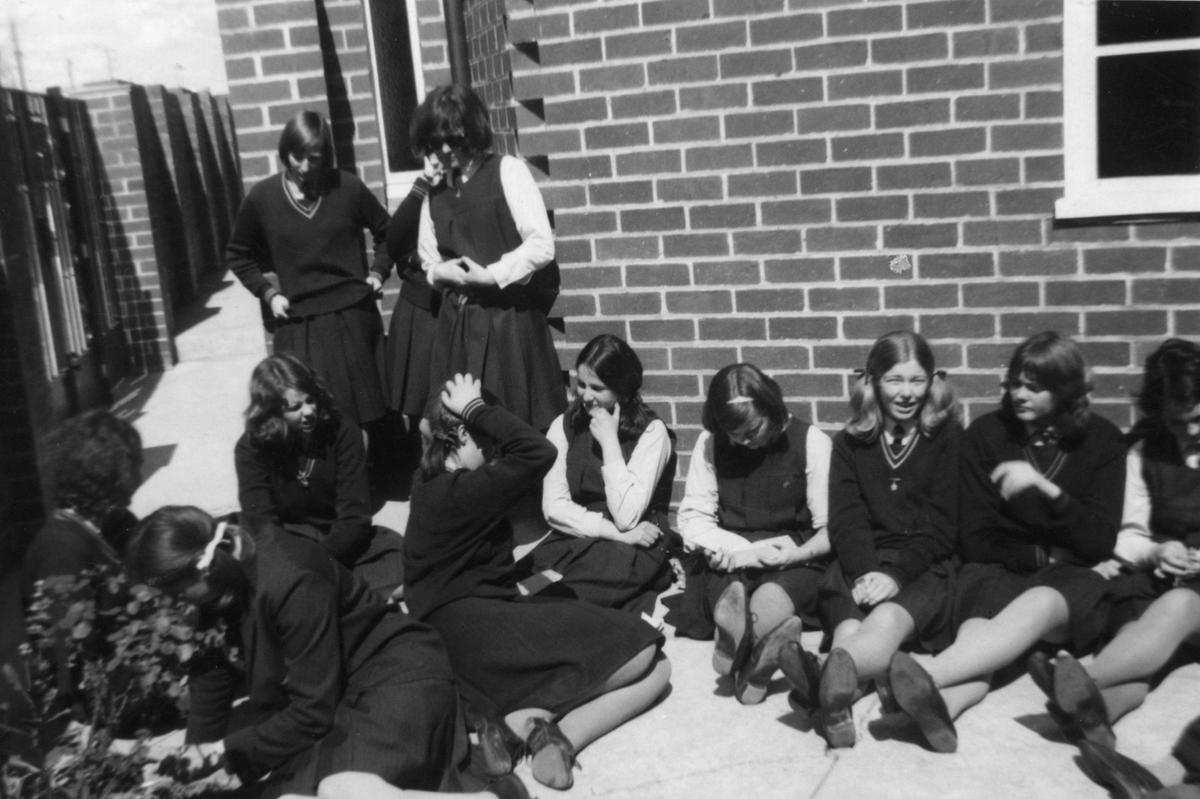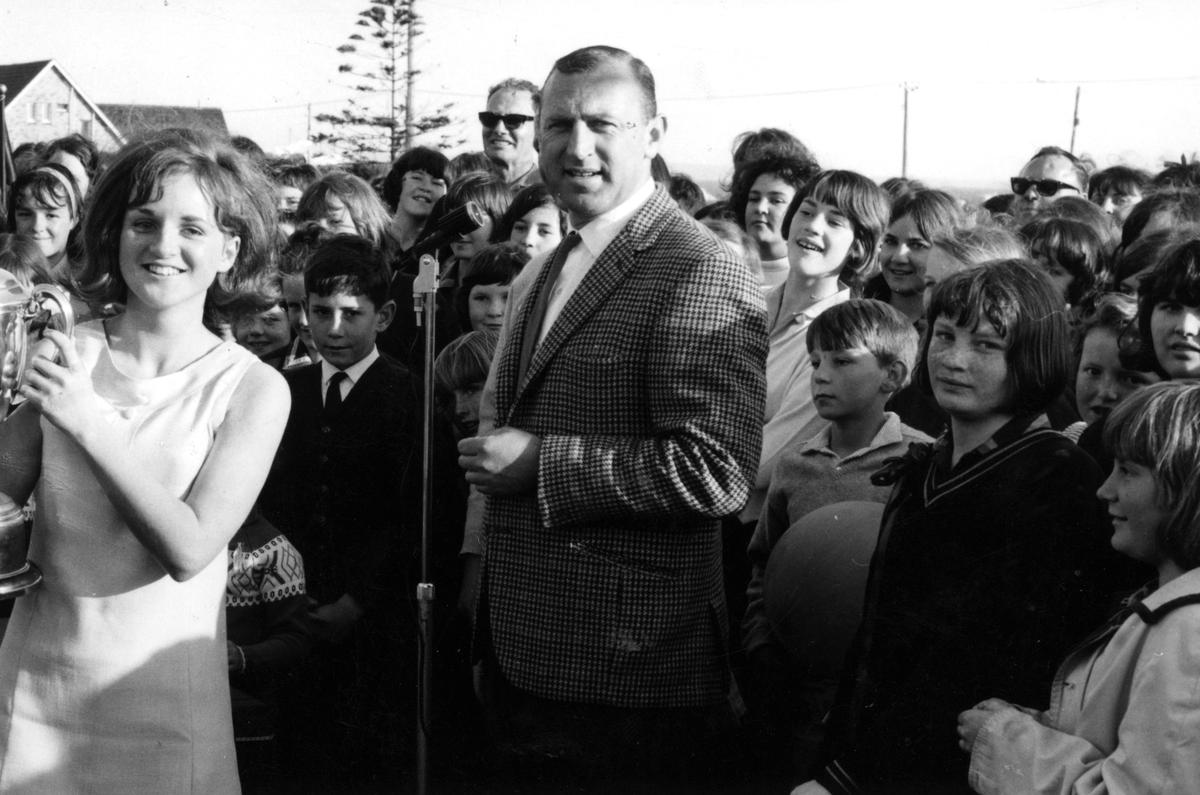Archives

1960s
After the buoyant days of the 50s, Kilbreda continued to go from strength to strength in the 60s, with numbers topping 1000 for the first time in 1965, a benchmark which continued until relatively recently. This decade also marked the end of an era in many ways, with the deaths of the Convent farmers, Ned Naughton and Festy Coyne in 1963 and 1964 respectively, which severed a link of nearly 60 years. Ned and Festy are buried not far from the Sisters at the Cheltenham Pioneer Cemetery.
In 1962, Federal Treasurer and later Prime Minister, Harold Holt, presented a plaque on HSV7 to Maree Tehan, leader of the Kilbreda Team in the Parliament of Youth Competition, saying “I hope to find your Team in Canberra soon.” Congratulating the Box Hill High School Boys, the runners-up, he said, “Women are accustomed to having the last word and in this case Kilbreda has proved it.”
In a further connection with HSV7, the late Mike Williamson, father of Michelle, offered his services as announcer at the annual sports carnival. The carnival of 1963 was also notable, as, for the first time, Kilbreda had six houses, Alacoque (light blue) and Delany (royal blue) having been newly formed. The photo of the six house captains is included.
In the mid 60s, with the numbers of boarders and sisters living at Mentone on the rise, the Oratory or old Chapel, situated where the front office now is, became too small and Convent Superior, Mother Stephanie O’Neill, began preparations for a larger modern Chapel, to be built adjoining the Colonnade and Convent. This building, currently the Meeting Room and Chapel, was built in 1964. The occasion of Mother Margaret Mary Bourke’s Golden Jubilee resulted in a great many donations ‘to be reserved for the outlay of the proposed altar’ in the new chapel. Other attempts to raise funds for its construction were more creative. A number of the Sisters placed weekly entries in the Herald Wealth Words competition, in the name of ‘Breda Chapel’, hoping to win enough money to finance the project. Mother Stephanie herself placed bets on horses after receiving tips from boarders and a local horse-trainer whose daughters attended the school. After many months of negotiations between Mother Stephanie and architects, builders and local government planning authorities, the first Mass was celebrated on August 15 1964.
It was not until June 5 1965, however, that Archbishop Fox officially opened and blessed St Brigid’s Chapel and altar. A brass plaque commemorating the occasion reads: “On the 5th day of June 1965, His Lordship Most Reverend Arthur F. Fox., D.D.Titular Bishop of Rhinocorura, consecrated and dedicated this chapel and altar in honour of St Brigid and enclosed therein the relics of the holy martyrs, Saints Aelidorus and Blandina.”
Mother Barbara Matthews, who became Principal in 1966, had assisted Mother Margaret Mary since 1960 and, being a science specialist herself, shared her vision to improve the facilities for the teaching of science. With the help of a Federal Government Science Grant (one of the first of its kind to be given to a Catholic school), the Delany Wing was added in 1965. The growing numbers necessitated further building, which resulted in St Joan’s Wing, which was added to the end of the Colonnade in 1967, replacing the old wooden building, which had stood there for nearly forty years. St Joan’s contained four classrooms (now rooms 33-36), Kilbreda’s first staffroom (now the music room) and offices for the Principal and her Secretary, (the two rooms adjoining the music room). Prior to the employment of Mrs Helene Chugg as Secretary in 1966, Kilbreda had managed without an administration area or team. These offices were later those of Miss O’Shea and Mr McConnell until about twenty years ago.
At this period, classrooms were not numbered, but rather named; students identified themselves as belonging to Leaving St Michael’s, for example. Small wooden plaques remain outside room 25 (Lourdes) and the former room 18 (St Lucy’s). In the late 60s, a decision to create an alternative to Sixth Form or Matric was instigated at Kilbreda and for a number of years, students availed themselves of this option.
The 1960s were significant in the life of Kilbreda as they marked the end of Mother Margaret Mary’s association with the College after 39 years as Principal and about 45 years in total. In 1962, Mother Margaret Mary celebrated the Golden Jubilee of her profession, which had taken place here at Mentone in 1912. An article appeared in the local press, entitled “A legend in her own lifetime”. “From behind the brick walls of Kilbreda Convent in Mentone for the past 58 years has emanated a warm, tender influence which has permeated the lives of thousands of Australian women. And to three generations of past pupils, the spirit has been personified by its former Reverend Mother and Present Principal, Mother Margaret Mary, whose long association with the school was crowned by her golden jubilee last week”.
In 1963, further cause for celebration occurred when Mother Marg was invited to the Italian Consulate, where Dr Stringari presented a medal to her, struck in Rome, to recognise her contribution to the pioneering of Italian language teaching in Australia. In 1965, pupils raised the sum of £105, to pay for the portrait of Mother Margaret Mary, which hangs in the Conference Room. On leaving Kilbreda, Mother Margaret Mary became secretary to the Provincial in Malvern, before joining a team to open a new school in Adelaide. She remained there for a few more years, before returning to retire in Malvern in the early 1970s. The 1967 Kilbreda Annual contains an article “A Kilbreda Identity” which talks of the high esteem in which she was held. “Every now and again, there is an aura of decided excitement about the senior school. Mother Margaret Mary is here! She comes unannounced; as always she is informal, but no-one needs to be told of her arrival. Whether she flies in from the new convent in New Guinea or motors over from Malvern, the moment Mother Margaret Mary enters the College gates, she is moving among the students she has taught and guided from the earliest years. On the colonnade, she is surrounded by groups of girls, all of whose names and families she remembers with astonishing accuracy.”
Mother Margaret Mary died in April 1979 at the age of 92 and was buried in the Cheltenham Pioneers’ Cemetery. In 2001, Sr Rosemarie Joyce csb, the then Provincial, made a submission to include Mother Margaret Mary in the Victorian Honour Roll of Women, an initiative to mark the Centenary of Federation. Mother Margaret Mary was one of 250 women who had made significant contributions to the lives of women and the community.
Damian Smith
Archives
